Year 3, Lesson 4.2: Diving Deep - Exploring Civic Dilemmas Through Different Lenses
Unit Learning Goal
Students will synthesize their learning about values, responsibility, and good citizenship to set meaningful goals and explore civic dilemmas from multiple perspectives, preparing for future action and leadership.
Lesson Goal
Students will analyze the “Deep Sea Dilemma” using the Good Work four lenses—roles, responsibilities, values, and alignment/misalignment—and will be able to articulate how each lens offers a different perspective on ethical decision-making.
Assessment
Monitor student engagement and reasoning during small group and fishbowl discussions.
Review completed Four Lenses Dilemma Response Sheets and Exit Tickets for depth of reflection and application of the lenses.
Casel Alignment
Social Awareness, Relationship Skills, Responsible Decision-Making
Portfolio Documentation
Resources
Printed or digital version of the “Deep Sea Dilemma”
Four Lenses for Dilemmas Framework (for projecting or reference)
Markers, chart paper, or sticky notes
Prerequisites
Students should be familiar with the concept of dilemmas and have had exposure to the core Good Project values and themes from earlier lessons, including the Four Lenses.
Total Time
45 minutes
Instructions
-
Remind students that dilemmas often involve complex decisions where there is no clear “right” answer. Often, we feel torn because we’re trying to honor our roles, our responsibilities, and our values—while trying to make decisions that align with who we are and what we believe.
Reintroduce the Four Lenses for Dilemmas:
Roles: How are different identities and life roles at play in the dilemma?
Responsibility: How are the various rings of responsibility pulling individuals in different directions regarding the dilemma? Which responsibility should take priority?
Values: What values are in conflict between individuals in the dilemma? What values might be shared? Why are these values important for the dilemma (e.g. historically)?
Alignments & Misalignment: What elements of the dilemma are in alignment? What elements are misaligned? What would need to change at a structural level for these elements to become aligned?
You may want to briefly display the Four Lenses Framework.
Optional Refresher
1. Opener: Four Corners Warm-Up [5 minutes]
Label four corners of the room: Roles, Responsibility, Values, Alignment & Misalignment.
Read one of the following questions related to civic dilemmas aloud. Ask students to walk to the corner that represents the lens they would use first to think through the issue. Ask a few to explain why they chose that lens during each round.
Sample Civic Decisions:
Should your school ban single-use plastic water bottles?
Should students be required to complete community service hours to graduate?
Should your town install surveillance cameras in public parks?
Should your local library remove books some people find offensive?
Should students be allowed to walk out of school to protest?
Ask:
Why did this lens feel most important to start with?
How would the dilemma look different from another lens?
Explain that today, they’ll use all four lenses to explore a much more complex civic dilemma.
2. Deep Dive into the Deep Sea Dilemma [10 minutes]
Together as a class, read the “Deep Sea Dilemma.”
Briefly summarize the key ethical tensions (e.g., environmental destruction vs. tech innovation, local communities vs. global industry).
Pose the following questions to the class:
Why might this be considered a civic dilemma?
Who are the major stakeholders?
Why might different people see this differently?
3. Interactive Group Work: Four Lenses Discussion [20 minutes]
Divide students into groups of 4. Assign each student one lens (Roles, Responsibility, Values, Alignment & Misalignment).
Pass out the Four Lenses Dilemma Response Sheet. Ask each group to do the following:
Each student briefly independently fills out their section based on their assigned lens.
Then, each small group comes together as a group to share all four perspectives.
Collaboratively, the group should discuss:
What makes this dilemma so complex?
What questions would you want a decision-maker to ask before taking action?
Encourage groups to record their collective insights.
4. Civic Fishbowl Discussion [5 minutes]
Ask one student per group to sit in a center circle (fishbowl) to share their group’s collective perspective on the dilemma. Each student speaks for 30–60 seconds, summarizing their group’s thinking through the lens they studied. They should then engage in cross-talk.
Students outside the fishbowl listen silently. After the sharing, allow 1–2 students from outside the circle to briefly comment or ask a question.
5. Closing and Exit Ticket (5 minutes)
Ask students to answer the following on their Exit Ticket:
“Choose one of the four lenses. Apply that lens to the “Charting Your Path” exercise from last lesson. What does that lens help you see?”
Collect the Exit Tickets for assessment and portfolio documentation.
-
Dilemma Remix Challenge
Ask students to rewrite the Deep Sea Dilemma from a different stakeholder’s point of view (e.g., a local fisherman, an environmental scientist, a mining executive). Then, reflect on how their answers across the four lenses change depending on the role.Public Forum or Mock Town Hall
Hold a class-wide mock town hall debate where students represent different perspectives from the dilemma. One group plays the decision-makers and must weigh lens-based evidence to decide on a course of action.Civic Connection Mini-Project
Students research a current civic dilemma (e.g., AI regulation, school surveillance, fast fashion, local zoning issues) and analyze it using the four lenses. They present their findings through a creative medium—poster, podcast snippet, or short skit.

